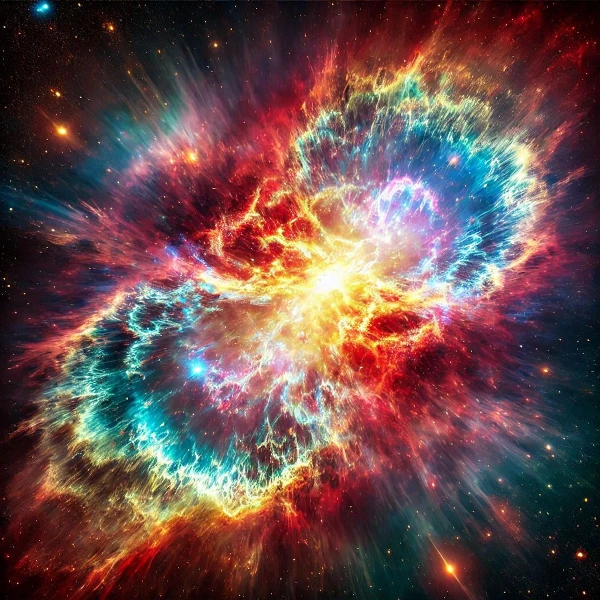
Image description: A star explosion, a supernova. Image credit AI.
Imagine a star that becomes so bright it lights up the entire sky! That's what we call a supernova. But how does it happen?
A supernova is a very powerful explosion of a star. This usually happens at the end of the star's life, when it no longer has enough fuel to shine. The star collapses in on itself and explodes, releasing a huge amount of energy and light.
There are two main types of supernovas:
Supernovas are very important for several reasons:
In summary, a supernova is a very powerful star explosion that happens at the end of its life. These explosions are crucial for the formation of new elements and for helping scientists understand the universe. The next time you look at the sky, think about these stars that shine so brightly before they disappear!